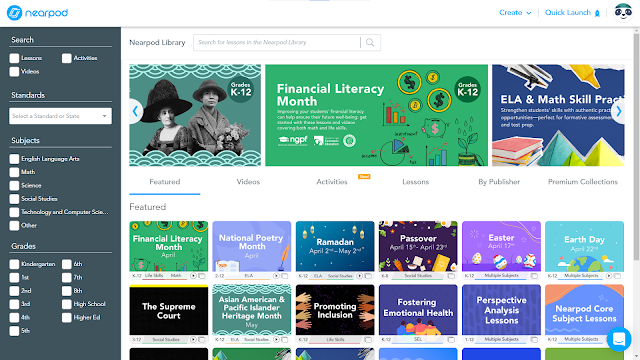Learning can be anywhere at anytime- use Nearpod for mobile learning
What is the first thing that comes to your mind when it comes to mobile phones and tablets? Well, in China, most teachers and parents believe they are distractions to students learning, and in many schools, these are not allowed to appear in any lesson. But actually, learning how to use mobile devices for teaching and learning can improve the efficiency and interactiveness within a class and show the progress of the teaching concepts(El-Hussein & Cronje, 2010). So today, I am going to introduce a mobile learning tool, Nearpod, to help teachers and students embrace mobile technology both inside and outside the classroom.
Characteristics of Nearpod
1. Easy to begin
Nearpod allows teachers to upload their files from Microsoft PowerPoint and Google Drive, which is user-friendly and saves time for adapting to the new platform.
2. Rich content and activities
After uploading the slides, teachers can add different content and activities to make their class more engaging and interactive. In the content column, teachers can apply a wide range of sources to their lessons, including videos, audio, slides and even 3D models and VR trips.
Compared with the H5P discussed in my last blog (click here), Nearpod functions as 'a material library' instead of 'a creative factory', which means teachers who are less experienced in technology can directly use the rich content samples in their class.
☝Videos, activities and lessons in Nearpod Library☝
Also, teachers can integrate different activities, like pools and quizzes, to make their classes interesting and improve students' engagement.
For instance, in the pool activity, the teacher can monitor the whole class's progress and share the results with students' devices to give instant feedback about their feelings and thoughts. The summary below helps teachers review the participation of the students in this activity including the response and proportion.
3. Flexible teaching patterns
Having integrated content and activities in your prepared slides, now it's time to start the lesson! In Nearpod, teachers can either choose the live participation mode or the student-paced mode.
The live participation mode is usually applied during a lesson, which requires the teacher's control of the pace and progress. Nearpod provides a synchronous teaching experience, where both teachers and students can see the same content at the same time on different screens. This helps the teacher to monitor students' knowledge mastery and decide whether to move on with the lesson.
The student-paced mode, by contrast, is student centred and suits situations for providing tasks. As students can use their mobile devices anywhere at any time, the task design can be creative and engaging, for example, a treasure hunt activity for children where they can go outside and find clues to solve the problem. Here, I would like to recommend the student choice board function, where students are autonomous to choose the task on the board with a particular code and begin their learning journey on their own or as a group!
Source from: Katie Micallef- nearpodblog (click here)
Limitations
👉 The free version has limited storage (100 MB), with a limited number of students (40 students) to participate.
👉 In the live participation mode, students' pages are synchronised with their teachers', meaning that they do not have the chance to look back to previous pages.
👉 It can be time-consuming to make full use of the student-paced mode for teaching since the teacher needs to make clear instructions for the task and monitor the progress of different students.
Finally, the video below gives an overview of Nearpod in terms of price, creating a Nearpod and how to use the Nearpod library. Hope you will enjoy it!😀
Video source: YouTube (click here)









Comments
Post a Comment